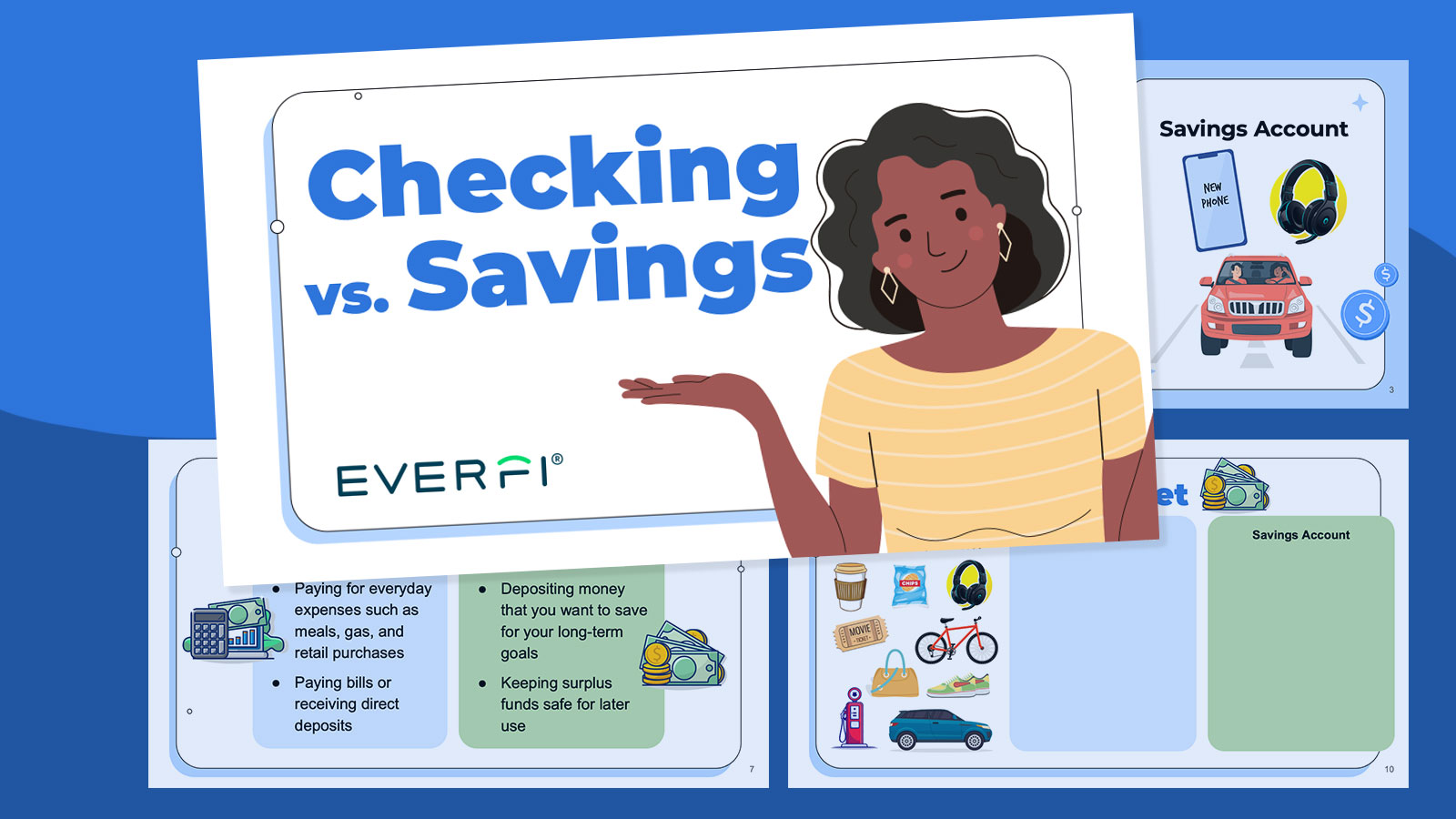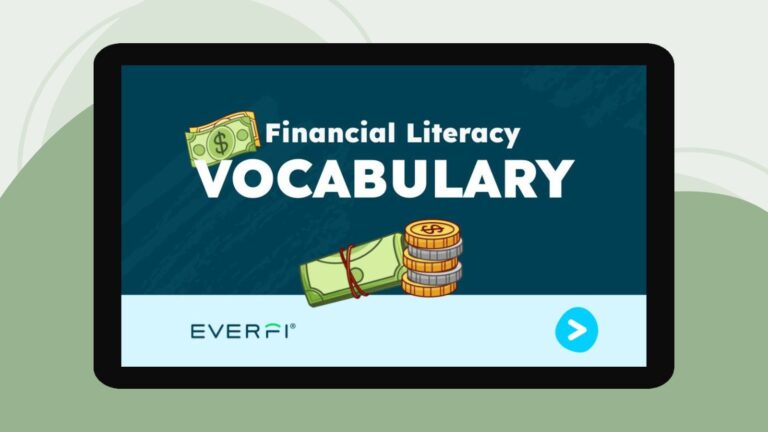What are the differences between checking and savings accounts? Knowing when to use each can be especially important for tweens and teens who are getting their first bank accounts in the near future. Or maybe they could use some help understanding what to do with their newly opened accounts. Below, learn about checking vs. savings accounts, and download our free Google slideshow that breaks down the basics of both accounts, in partnership with our friends at EVERFI.
What is a checking account?
- A checking account is a bank account used to keep money for everyday purchases.
- Checking accounts allow you to keep money for daily purchases secure and access funds through online banking.
- When paying with a debit card or check, the funds come from a checking account.
What is a savings account?
- A savings account is a bank account used to store money for long-term goals.
- Savings accounts typically offer interest and allow your money to grow as you wait to use it at a later date.
- Some banks may limit the number of monthly withdrawals allowed from a savings account.
The key differences between checking and savings accounts
You should store money in checking accounts for everyday transactions, while keeping money in savings accounts that you want to save for the long term. Funds in a checking account are readily accessible using a debit card, check, or ATM. Typically, you need to transfer money out of a savings account in order to use it. Additionally, savings accounts can offer interest, allowing your money to grow, while checking accounts usually do not.
For more on these key differences, download our free Checking vs. Savings Account slideshow!
When should each account be used?
Checking accounts are best used for daily purchases including meals, gas, and everyday shopping as well as paying bills or receiving direct deposits. On the other hand, savings accounts should be used to deposit money that you want to use down the road, or for keeping surplus cash safe.
What are the benefits of checking and savings accounts?
Opening these accounts gives you access to your money through mobile apps or online banking. It’s easy to check balances and transfer funds at your fingertips. Additionally, checking accounts allow for ATM withdrawals, debit card transactions, direct deposit, and cash back where it is offered. An added benefit of savings accounts is the opportunity to earn interest. Funds in savings accounts can grow over time depending on the account interest rate offered by the bank.
Are checking and savings accounts secure?
The short answer is yes! Insurance covers your deposits up to $250,000, providing you with peace of mind that your cash is accounted for. The Federal Deposit Insurance Corporation, know as the FDIC, regulates banks to ensure that if a bank should fail, your money is safe. Additionally, the National Credit Union Administration regulates credit unions.
Which account should I open?
Decide: Are you currently keeping money in the bank for everyday purchases or storing money for long-term purchases? In most cases, it is a good idea to open both a checking and a savings account. This allows you to keep money for your daily purchases in a checking account while also saving for your long-term goals and keeping excess funds safe in a savings account.
How do I open a bank account?
You can open your account at a local bank or online. You’ll typically need an ID and your basic personal information. Keep in mind that if you’re under the age of 18, you’ll need to bring a guardian along. Before choosing a bank, do some research on minimum balance requirements, any monthly fees, and interest rates.
Get our free slideshow! Here’s what it covers:
- Introduction to checking and savings accounts with definitions
- Key differences
- When each account should be used
- Scenario activity for small-group or independent practice
- Two exit ticket slides to check for understanding
How can I use the slideshow in my classroom?
- Use the provided Google Slides and speaker notes to guide you through the mini-lesson.
- Taking approximately 30 to 45 minutes, it’s the perfect lesson to use during any curriculum!
- Introduce students to the basics of checking and savings accounts, and have them complete the scenario activity.
- Then, students can work through the two exit ticket activities to reinforce their learning.

